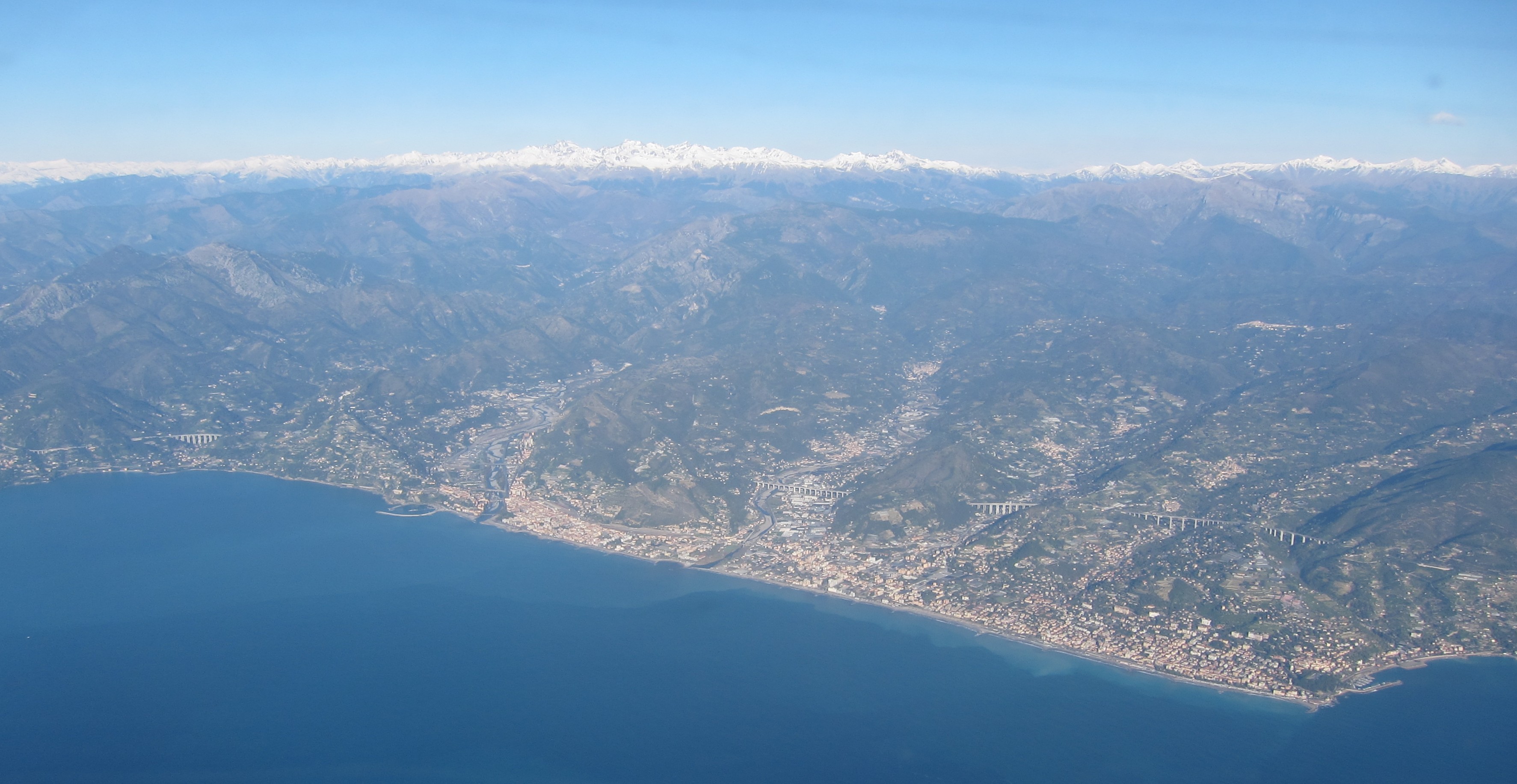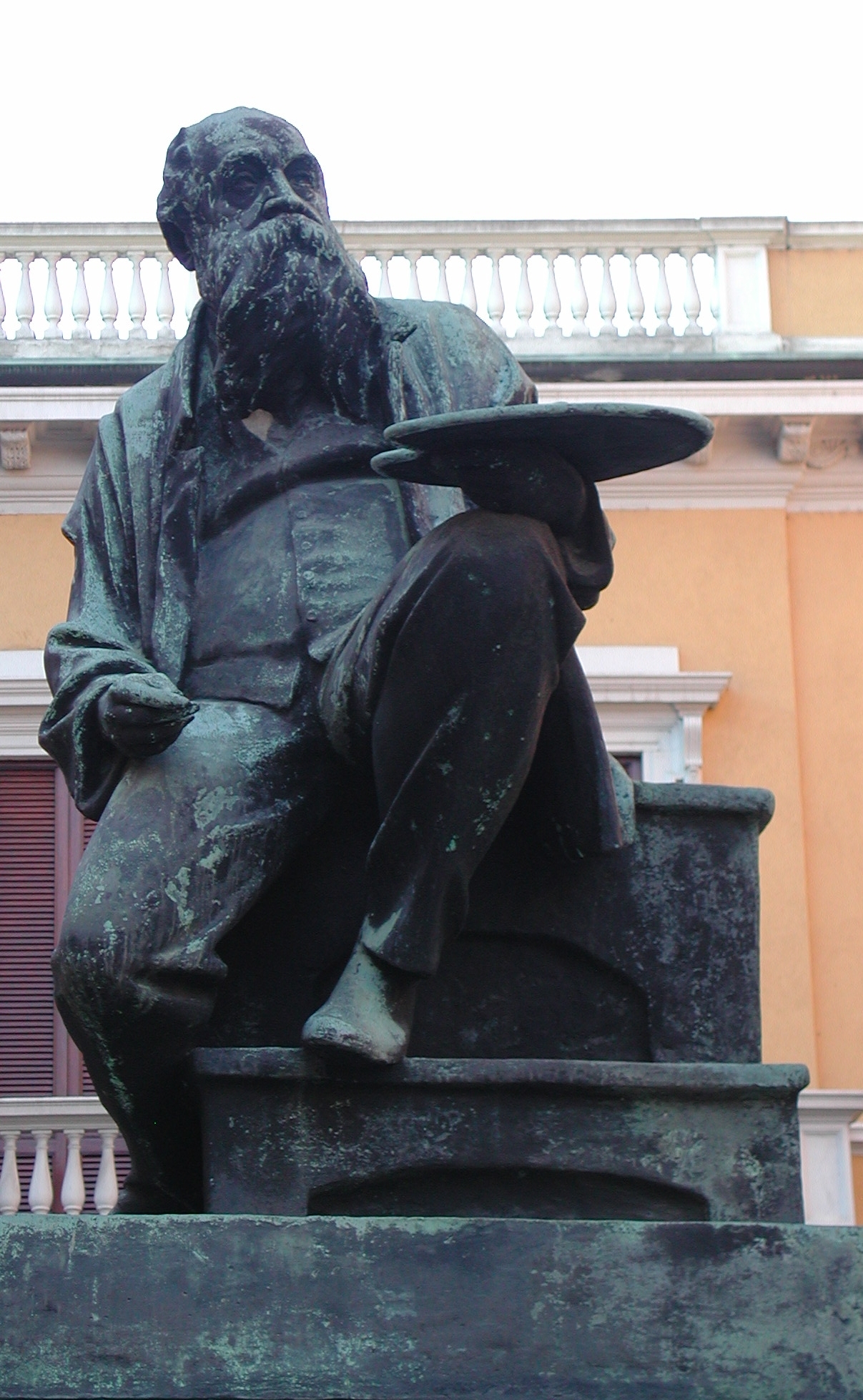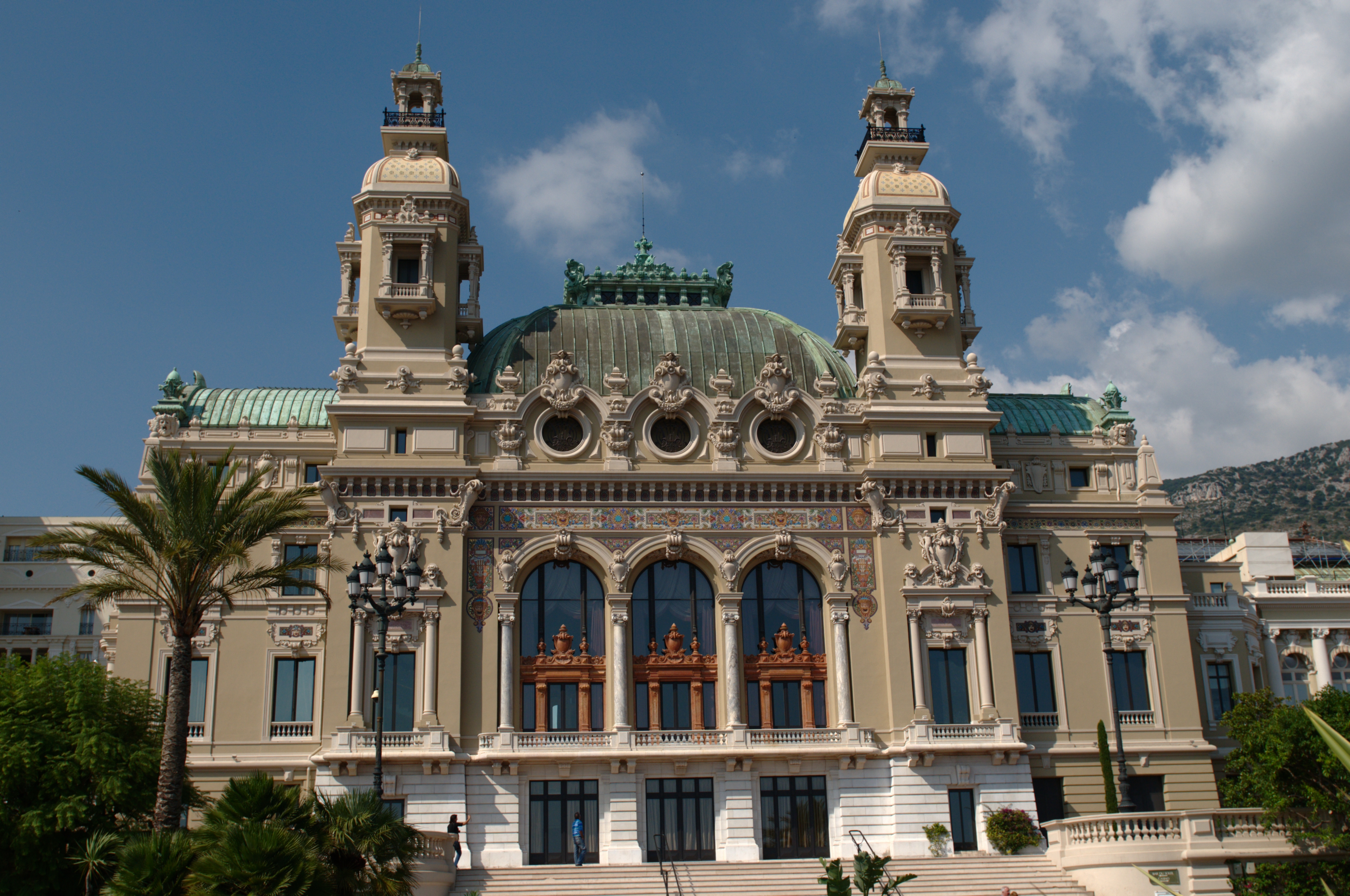|
Town Hall Of Bordighera
The Bordighera Town Hall ( it, Municipio di Bordighera) is located at 32 Via XX Settembre in Bordighera, Liguria. History The current town hall was built to a design by the French architect Charles Garnier. Garnier, who had left Paris because of Paris Commune (1871), was looking for a land in Bordighera to build his future house. In 1871 he proposed the municipality to buy the land where only school of the city stayed. The offer of 6,000 pounds was very generous, it would have allowed the construction of a new school for which Garnier provided the plans. The project included a classical building that integrates well with the old town of Bordighera that lies behind. The new schools foresaw not only a new section for boys replacing the previous one, but also a girls' section and one for small children. The project is to be considered truly innovative for its time and the municipality accepted the proposal. During the works, which were not followed by Garnier, there were numero ... [...More Info...] [...Related Items...] OR: [Wikipedia] [Google] [Baidu] |
Bordighera
Bordighera (; lij, A Bordighea, locally ) is a town and ''comune'' in the Province of Imperia, Liguria (Italy). Geography Bordighera is located from the land border between Italy and France, and it is possible to see the French coast with a naked eye from the town. Having the "Capo Sant’Ampelio" which protrudes into the sea, it is the southernmost commune of the region. The cape is at around the same latitude as Pisa and features a little church built in the 11th century for Sant’Ampelio, the patron saint of the city. Since Bordighera is built where the Maritime Alps plunge into the sea, it benefits from the Foehn effect which creates a special microclimate that has warmer winters. History It seems that Bordighera has been inhabited since the Palaeolithic era, as archaeologists have found signs of human activities in the caves along the Italian and French coast. In the 6th century BC came the Ligures, from whom the name of the region, "Liguria" in Italian, is derived. They w ... [...More Info...] [...Related Items...] OR: [Wikipedia] [Google] [Baidu] |
Araucaria Heterophylla
''Araucaria heterophylla'' (synonym ''A. excelsa'') is a species of conifer. As its vernacular name Norfolk Island pine (or Norfolk pine) implies, the tree is endemic to Norfolk Island, an external territory of Australia located in the Pacific Ocean between New Zealand and New Caledonia. It is not a true pine, which belong to the genus ''Pinus'' in the family Pinaceae, but instead is a member of the genus ''Araucaria,'' in the family Araucariaceae, which also contains the monkey-puzzle tree. Members of ''Araucaria'' occur across the South Pacific, especially concentrated in New Caledonia (about due north of Norfolk Island) where 13 closely related and similar-appearing species are found. It is sometimes called a star pine, Polynesian pine, triangle tree or living Christmas tree, due to its symmetrical shape as a sapling. History The first European known to have sighted Norfolk Island was Captain James Cook. In 1774, on his second voyage to the South Pacific in HMS ''Resoluti ... [...More Info...] [...Related Items...] OR: [Wikipedia] [Google] [Baidu] |
Museums In Liguria
A museum ( ; plural museums or, rarely, musea) is a building or institution that cares for and displays a collection of artifacts and other objects of artistic, cultural, historical, or scientific importance. Many public museums make these items available for public viewing through exhibits that may be permanent or temporary. The largest museums are located in major cities throughout the world, while thousands of local museums exist in smaller cities, towns, and rural areas. Museums have varying aims, ranging from the conservation and documentation of their collection, serving researchers and specialists, to catering to the general public. The goal of serving researchers is not only scientific, but intended to serve the general public. There are many types of museums, including art museums, natural history museums, science museums, war museums, and children's museums. According to the International Council of Museums (ICOM), there are more than 55,000 museums in 202 countries ... [...More Info...] [...Related Items...] OR: [Wikipedia] [Google] [Baidu] |
Historic House Museums In Italy
History (derived ) is the systematic study and the documentation of the human activity. The time period of event before the invention of writing systems is considered prehistory. "History" is an umbrella term comprising past events as well as the memory, discovery, collection, organization, presentation, and interpretation of these events. Historians seek knowledge of the past using historical sources such as written documents, oral accounts, art and material artifacts, and ecological markers. History is not complete and still has debatable mysteries. History is also an academic discipline which uses narrative to describe, examine, question, and analyze past events, and investigate their patterns of cause and effect. Historians often debate which narrative best explains an event, as well as the significance of different causes and effects. Historians also debate the nature of history as an end in itself, as well as its usefulness to give perspective on the problems of the p ... [...More Info...] [...Related Items...] OR: [Wikipedia] [Google] [Baidu] |
City And Town Halls In Italy
A city is a human settlement of notable size.Goodall, B. (1987) ''The Penguin Dictionary of Human Geography''. London: Penguin.Kuper, A. and Kuper, J., eds (1996) ''The Social Science Encyclopedia''. 2nd edition. London: Routledge. It can be defined as a permanent and densely settled place with administratively defined boundaries whose members work primarily on non-agricultural tasks. Cities generally have extensive systems for housing, transportation, sanitation, utilities, land use, production of goods, and communication. Their density facilitates interaction between people, government organisations and businesses, sometimes benefiting different parties in the process, such as improving efficiency of goods and service distribution. Historically, city-dwellers have been a small proportion of humanity overall, but following two centuries of unprecedented and rapid urbanization, more than half of the world population now lives in cities, which has had profound consequ ... [...More Info...] [...Related Items...] OR: [Wikipedia] [Google] [Baidu] |
Buildings And Structures In Liguria
A building, or edifice, is an enclosed structure with a roof and walls standing more or less permanently in one place, such as a house or factory (although there's also portable buildings). Buildings come in a variety of sizes, shapes, and functions, and have been adapted throughout history for a wide number of factors, from building materials available, to weather conditions, land prices, ground conditions, specific uses, prestige, and aesthetic reasons. To better understand the term ''building'' compare the list of nonbuilding structures. Buildings serve several societal needs – primarily as shelter from weather, security, living space, privacy, to store belongings, and to comfortably live and work. A building as a shelter represents a physical division of the human habitat (a place of comfort and safety) and the ''outside'' (a place that at times may be harsh and harmful). Ever since the first cave paintings, buildings have also become objects or canvasses of much art ... [...More Info...] [...Related Items...] OR: [Wikipedia] [Google] [Baidu] |
Sanremo
Sanremo (; lij, Sanrémmo(ro) or , ) or San Remo is a city and comune on the Mediterranean coast of Liguria, in northwestern Italy. Founded in Roman times, it has a population of 55,000, and is known as a tourist destination on the Italian Riviera. It hosts numerous cultural events, such as the Sanremo Music Festival and the Milan–San Remo cycling classic. Name The name of the city is a phonetic contraction of ''Sant'Eremo di San Romolo'', which refers to Romulus of Genoa, the successor to Syrus of Genoa. It is often stated in modern folk stories that Sanremo is a translation of Saint Remus. In Ligurian language (Romance), Ligurian, his name is ''San Rœmu''. The spelling ''San Remo'' is on all ancient maps of Liguria, the ancient Republic of Genoa, Italy in the Middle Ages, the Kingdom of Sardinia, and the Kingdom of Italy. It was used in 1924 in official documents under Benito Mussolini, Mussolini. This form of the name appears still on some road signs and, more rarely, in ... [...More Info...] [...Related Items...] OR: [Wikipedia] [Google] [Baidu] |
Mosè Bianchi
Mosè Bianchi (1840–1904) was an Italian painter and printmaker. Biography Bianchi was born in Monza. His family moved to Milan and he enrolled at the Brera Academy. Having interrupted his studies to serve in the second war of independence, he returned to attend the school of painting directed by Giuseppe Bertini. The award of a grant in 1867 enabled him to visit Venice and then Paris in 1869. He took part with some success at the Brera exhibitions and the Vienna Exhibition of 1873. It was in this period that he began to paint genre scenes in 18th-century settings and numerous portraits, soon becoming one of the artists most in demand with the Milanese middle classes. He returned to Venice in 1879 and visited Chioggia for the first time. Both places were to be featured also in later years in a series of intense views exhibited at exhibitions in Milan and Venice alongside genre scenes, views of Milan and landscapes of the countryside around Gignese. Among his main works were a ... [...More Info...] [...Related Items...] OR: [Wikipedia] [Google] [Baidu] |
Winter Gardens (Bordighera)
The Winter Gardens ( it, Giardini Winter) were created by the German botanist Ludwig Winter and they are located at 6, Via Ludovico Winter in Bordighera, Liguria, Italy. History On 17 May 2015, after being long abandoned, the Winter gardens were reopened to the public. Winter was a passionate botanist and had already made its reputation by collaborating on the Hanbury Gardens. Enchanted by the place and the climate suited to the development of the flora, he decided to settle in Bordighera and create his own botanical gardens. These gardens are particularly famous. They are now part of a private property located close to the Pallanca exotic gardens (via Madonna of the wheel 28). From the road you can still see the famous pergola which is portrayed in various photos and postcards. These gardens incorporated the famous twelve palms of Madonna della Ruota, celebrated by Scheffel in his poem of 1856, entitled "Near Death" and also painted by Hermann Nestel and Friederich von Kleudge ... [...More Info...] [...Related Items...] OR: [Wikipedia] [Google] [Baidu] |
Charles Garnier (architect)
Jean-Louis Charles Garnier (; 6 November 1825 – 3 August 1898) was a French architect, perhaps best known as the architect of the Palais Garnier and the Opéra de Monte-Carlo. Early life Charles Garnier was born Jean-Louis Charles Garnier on 6 November 1825 in Paris, on the Rue Mouffetard, in the present-day 5th arrondissement. His father, Jean" André Garnier, 1796–1865, who was originally from Sarthe, a department of the French region of Pays de la Loire, had worked as a blacksmith, wheelwright, and coachbuilder before settling down in Paris to work in a horse-drawn carriage rental business. He married Felicia Colle, daughter of a captain in the French Army. Later in life Garnier would all but ignore the fact that he was born of humble origins, preferring to claim Sarthe as his birthplace. Education Garnier became an apprentice of Louis-Hippolyte Lebas, and after that a full-time student of the École royale des Beaux-Arts de Paris, beginning during 1842. He obtained ... [...More Info...] [...Related Items...] OR: [Wikipedia] [Google] [Baidu] |
Ludwig Winter
Ludwig Winter (August 9, 1846 – July 12, 1912) was a German botanist, nurseryman and landscape designer, creator of gardens such as the Giardini Botanici Hanbury, noted for introducing tall palms and other foreign species to the Ligurian riviera. Biography Born in Kingdom of Prussia, Prussia, the son of a bookseller, the family moved to Leipzig where he studied botany and became a gardener at Erfurt. After two years at Erfurt he went to the School of Horticulture in Potsdam, graduating in Botanics, and then became head gardener at the Botanische Gärten der Friedrich-Wilhelms-Universität Bonn, Botanical Garden of Poppelsdorf near Bonn. In 1867 he went to the Exposition Universelle (1867), Paris World Exposition and settled there, working first as a labourer and then as head gardener in the Tuileries Garden. As the Franco-Prussian War approached, the increasingly tense atmosphere in Paris forced Winter to move south via Marseilles and Cannes to Hyères in the Côte d'Azur, wh ... [...More Info...] [...Related Items...] OR: [Wikipedia] [Google] [Baidu] |
Ficus Macrophylla
''Ficus macrophylla'', commonly known as the Moreton Bay fig or Australian banyan, is a large evergreen banyan tree of the family Moraceae native to eastern Australia, from the Wide Bay–Burnett region in the north to the Illawarra in New South Wales, as well as Lord Howe Island. Its common name is derived from Moreton Bay in Queensland, Australia. It is best known for its imposing buttress roots. ''Ficus macrophylla'' is called a strangler fig because seed germination usually takes place in the canopy of a host tree, where the seedling lives as an epiphyte until its roots establish contact with the ground, when it enlarges and strangles its host, eventually becoming a freestanding tree by itself. Individuals may reach in height. Like all figs, it has an obligate mutualism with fig wasps; figs are pollinated only by fig wasps, and fig wasps can reproduce only in fig flowers. Many species of birds, including pigeons, parrots, and various passerines, eat the fruit. ''Ficu ... [...More Info...] [...Related Items...] OR: [Wikipedia] [Google] [Baidu] |


.jpg)





